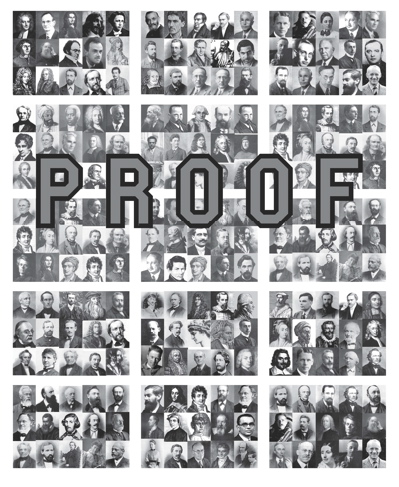
THE image on the MATH 300 page was created as a cover for my textbook, but I did not use it because I did not care to check if all the photo sources were really in the public domain.
It is inspired by a photograph by the American photographer Walker Evans (1903–1975). Taken in Birmingham Alabama in 1936, Evan's photograph shows a portion of a storefront window of a portrait photographer's studio. The composition is starkly mathematical. Five-by-three groups of portraits are arranged in a larger three-by-five array. It took the genius of Evans to see such depth and humanity in a simple grid.
In my adaptation, portraits of mathematicians from throughout history are arranged behind the word PROOF. It is intended as a reminder that a proof is an eminently human construction. A proof is a rhetorical device that compels us to believe a mathematical truth. Although mathematical reality exists beyond and independent of our experience, a proof is a thing of our own making. Creating a good proof can take creativity, insight, ingenuity, brilliance and good taste.
Though not all of these traits may be necessary for every proof you write in this course, the things you learn here may nonetheless lead you to a higher plane of understanding and creativity.